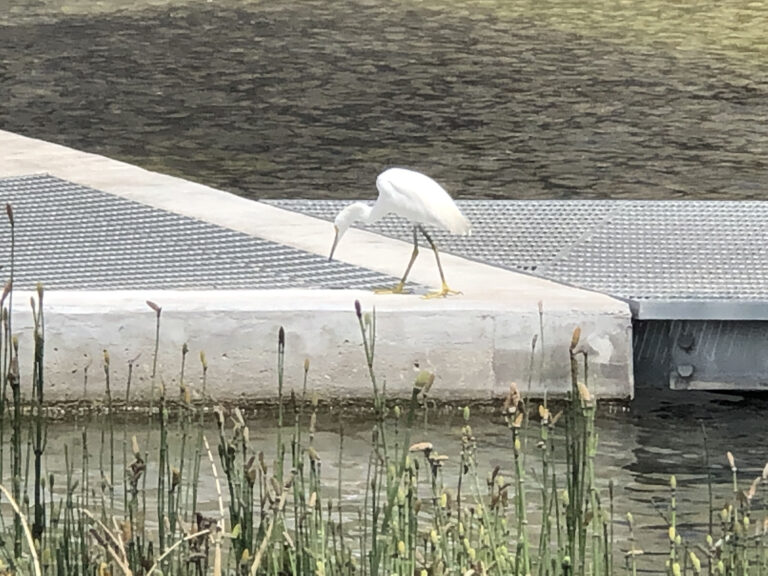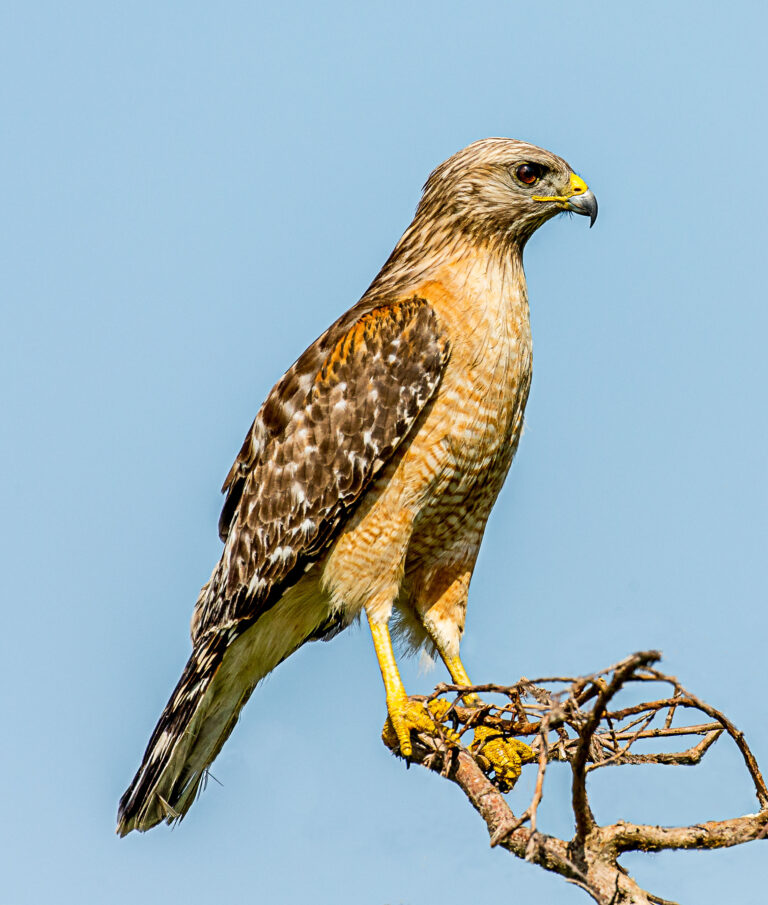Nature Returns to the Creek
English
Español
-
By the middle of the 1900s, many engineering projects that were intended to control flooding along San Pedro Creek confined the once free-flowing stream into an unsightly concrete channel. This long-neglected waterway, with its forgotten role in the city’s origins, was redesigned as part of the San Pedro Creek Culture Park which enhanced natural features while preserving the channel’s important flood management function. Native plantings have brought large portions of the creek system to life, increasing wildlife habitat and simultaneously beautifying the civic landscape. Fish, birds, and other animals using the redeveloped creek help indicate the improved health of the changed environment. Birds of prey, wading birds, freshwater diving birds, and songbirds are all making a comeback along this and other restored urban greenways and creeks.
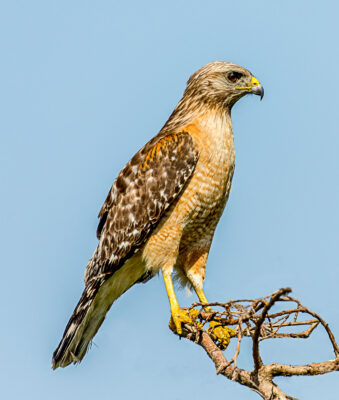
Photo: Andy Morffew; Courtesy: Creative Commons (CC BY 2.0). Red-shouldered Hawk (Buteo lineatus) — rusty markings underneath the body and a long black-and-white barred tail. Multiple generations often return to the same nesting territory for decades. Hawks feed on small mammals, lizards, snakes, amphibians, large insects, and occasionally smaller birds.
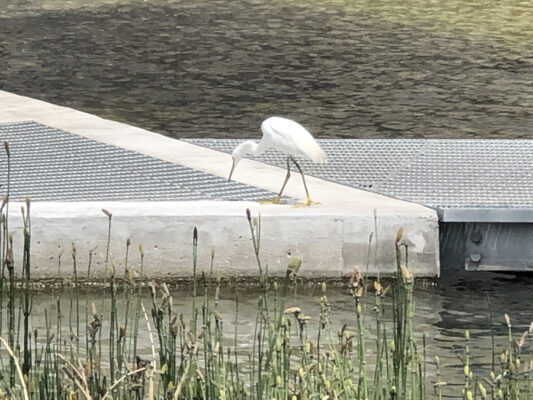
Photo, Dana Spottswood;
Courtesy: Toxey/McMillan Design Associates, LLC, San Antonio.Snowy Egret (Egretta thula) — yellow feet, black legs, and yellow patch at the base of a black bill. During breeding, it develops wispy plumage on the back of the head and neck, which once caused millions to be killed to provide these feathers for women’s hats.
-
A mediados del siglo XX, muchos proyectos de ingeniería destinados a controlar las inundaciones a lo largo de San Pedro Creek confinaron el arroyo, antaño de libre circulación, en un canal de concreto poco atractivo. Esta vía fluvial, por mucho tiempo abandonada y con un papel olvidado en los orígenes de la ciudad, fue rediseñada como parte del Parque Cultural de San Pedro Creek, que mejoró las características naturales mientras preservaba la importante función de control de inundaciones del canal. Las plantas nativas devolvieron la vida a grandes partes del sistema del arroyo, aumentando el hábitat de la fauna y la flora y enriqueciendo al mismo tiempo el paisaje cívico. Los peces, las aves y otros animales que usan el arroyo reformado contribuyen a reflejar la mejora del medioambiente reformado. Las aves de presa, las aves limícolas, las aves buceadoras de agua dulce y los pájaros cantores están reapareciendo a lo largo de esta y otras vías verdes y arroyos urbanos restaurados.

Photo: Andy Morffew; Courtesy: Creative Commons (CC BY 2.0). Aguillilla Pecho Rojo (Buteo lineatus) — marcas rojizas bajo el cuerpo y una larga cola barrada en blanco y negro. Varias generaciones suelen volver al mismo territorio de anidación durante décadas. Los halcones se alimentan de pequeños mamíferos, lagartos, serpientes, anfibios, grandes insectos y, ocasionalmente, de aves más pequeñas.

Photo, Dana Spottswood;
Courtesy: Toxey/McMillan Design Associates, LLC, San Antonio.Garceta Nívea (Egretta thula) — pies amarillos, patas negras y una mancha amarilla en la base del pico negro. Durante la cría, desarrolla un plumaje ralo en la parte posterior de la cabeza y el cuello, lo que en su día provocó la muerte de millones para proveerse de estas plumas para los sombreros de mujeres.
